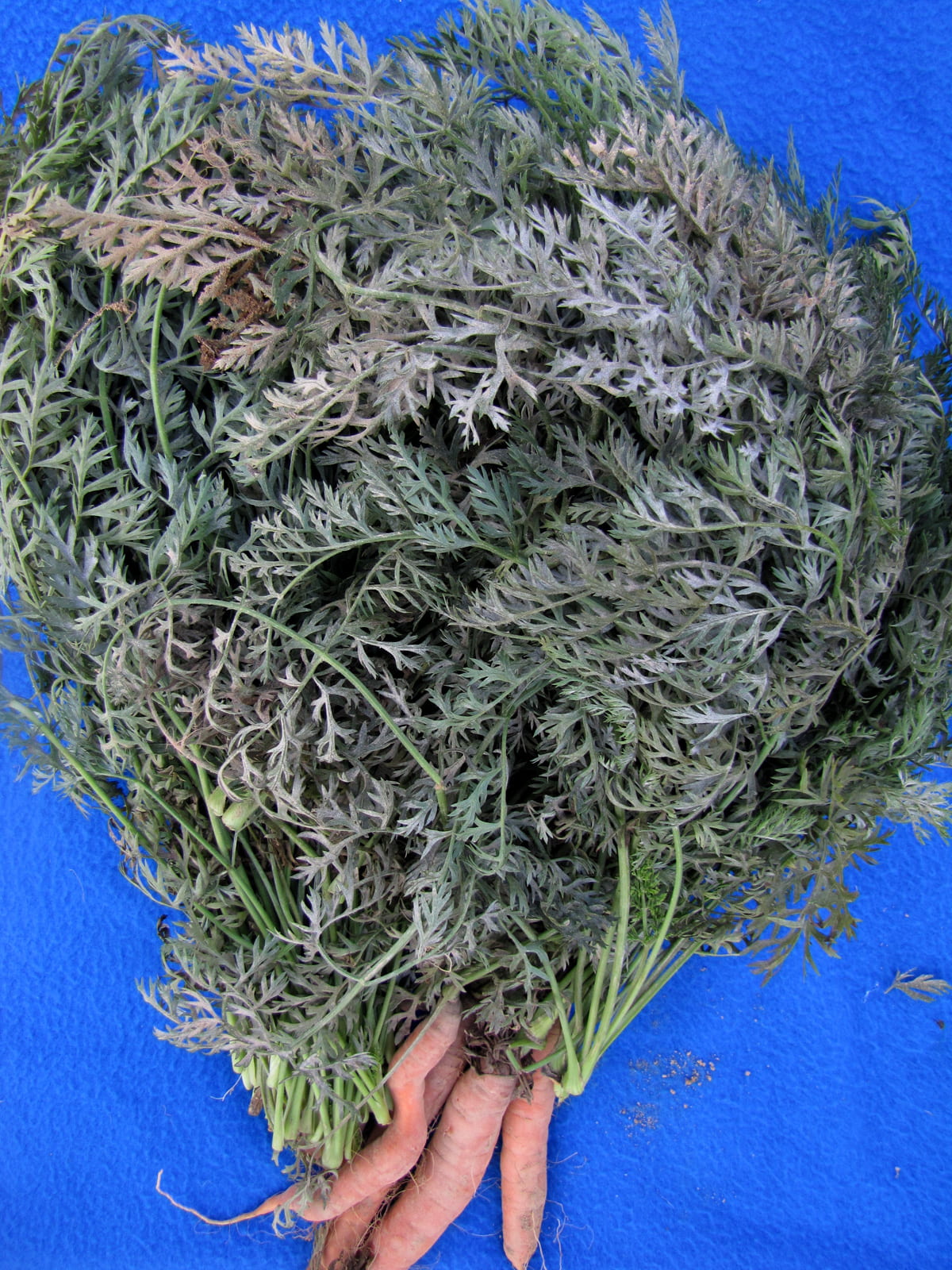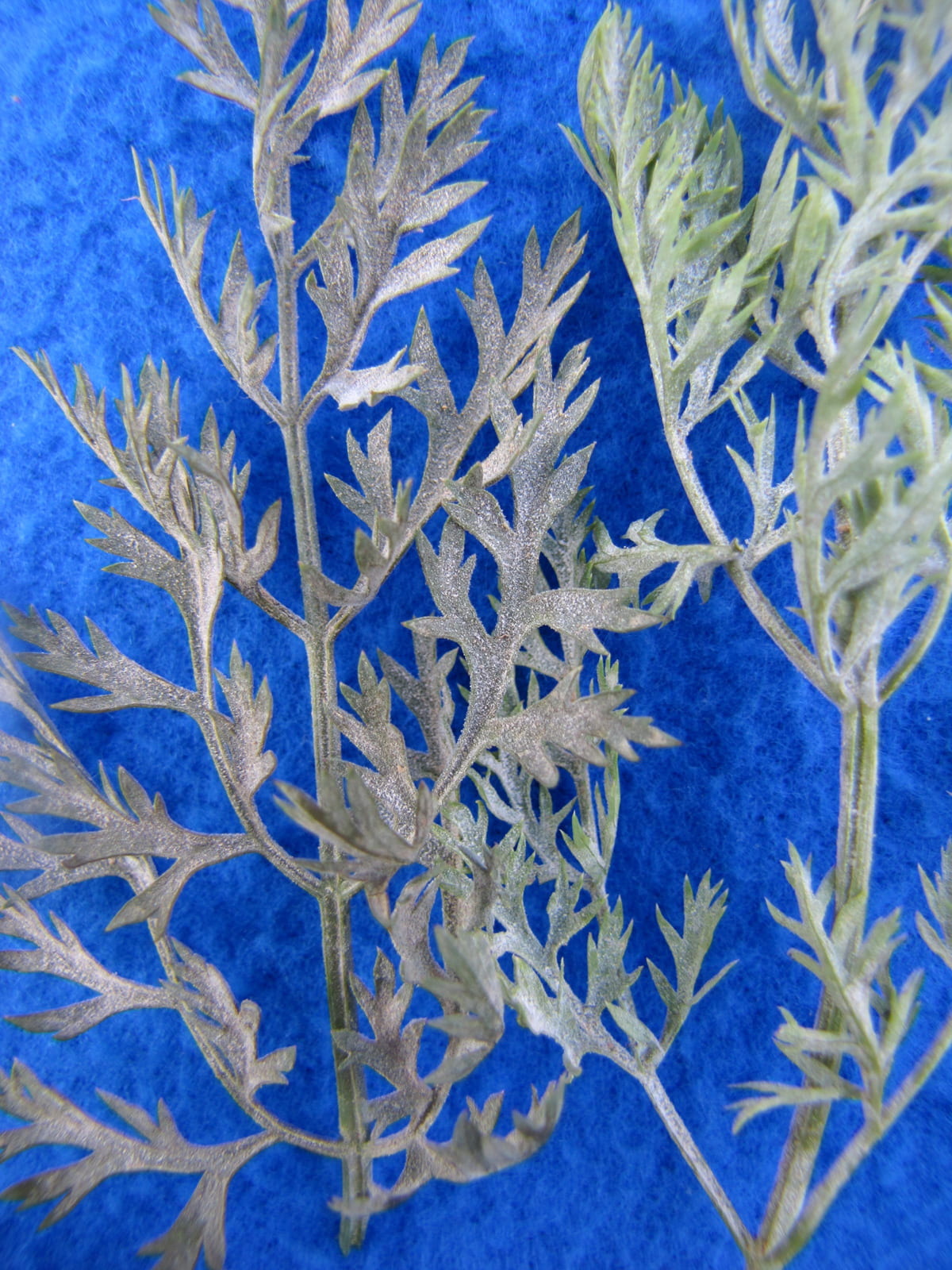Powdery mildew was observed on carrot growing in a couple locations on the North and South Forks of Long Island for the first time in 2012. It also developed in production fields in Upstate New York. The last time this disease was observed in Upstate New York was 2005, another hot and dry year. While dry due to low rainfall, there were days with high humidity, which is considered favorable for infection. This disease was first reported in the U.S. in California and Texas in 1975.
Leaves of affected carrot plants become white due to being covered with typical growth of a powdery mildew. Plants are more susceptible when growing in shady locations or stressed by drought. Susceptibility also increases with plant age, most notably starting seven weeks after seeding.
The pathogen can also infect related plants, including celery, parsley, dill, chervil, and parsnip. Host range studies have documented that while 86 cultivated and weedy plants in this plant family (Apiaceae) are susceptible, there is host specialization in the pathogen, thus a particular pathogen strain is not able to infect all host plant types.
Source of the pathogen likely is wind-dispersed spores from crops or weeds. These spores can be moved long distances, thus the source could be another region. The pathogen (Erysiphe heraclei) can produce cleistothecia (structure containing spores that can survive in the absence of living host plant tissue), but it is not known if they have a potential role as a source of inoculum from affected plants a previous season or as contamination on seed.
Management practices include providing adequate fertilizer and water to maintain good crop growth and avoid drought stress. Mulching can also minimize drought stress.
Applying fungicides to control powdery mildew in carrot may be needed when conditions are very favorable as severe infection can lead to early leaf death which can affect harvest, or when carrots are marketed with their tops as the appearance of powdery mildew may make them unsalable. Yield often is not impacted because plants become susceptible with age and leaves are not killed as quickly as can occur with other foliar diseases. Fungicides available for commercial growers include Bravo (or another fungicide with chlorothalonil) which will provide contact control. Several mobile fungicides are also labeled for managing powdery mildew in carrot. Alternate among products with different FRAC code numbers: Quadris (11), Gem (11), Cabrio (11), Quilt (11, 3), Pristine (11,7), Endura (7), PropiMax (3), and Tilt (3). Two of these fungicides contain two active ingredients in two of the three chemical groups labeled for this disease.
Please report sightings of this disease to Meg McGrath
Please Note: Fungicides mentioned are for use in commercial production, not gardens. The specific directions on pesticide labels must be adhered to — they supersede these recommendations if there is a conflict. Any reference to commercial products, trade or brand names, is for information only; no endorsement is intended. For up-to-date information on labeled conventional fungicides see Cornell Integrated Crop and Pest Management Guidelines for Commercial Vegetable Production and biopesticides see the Biopesticides website.





